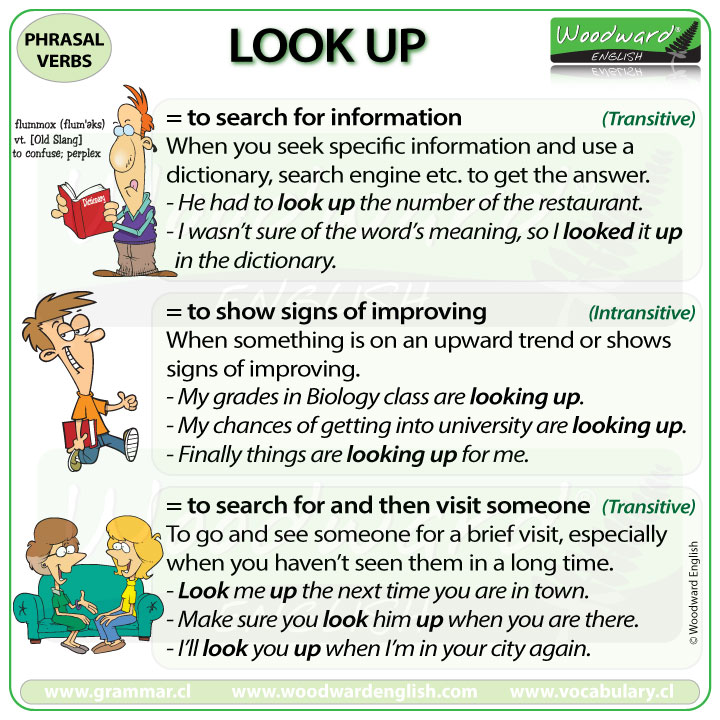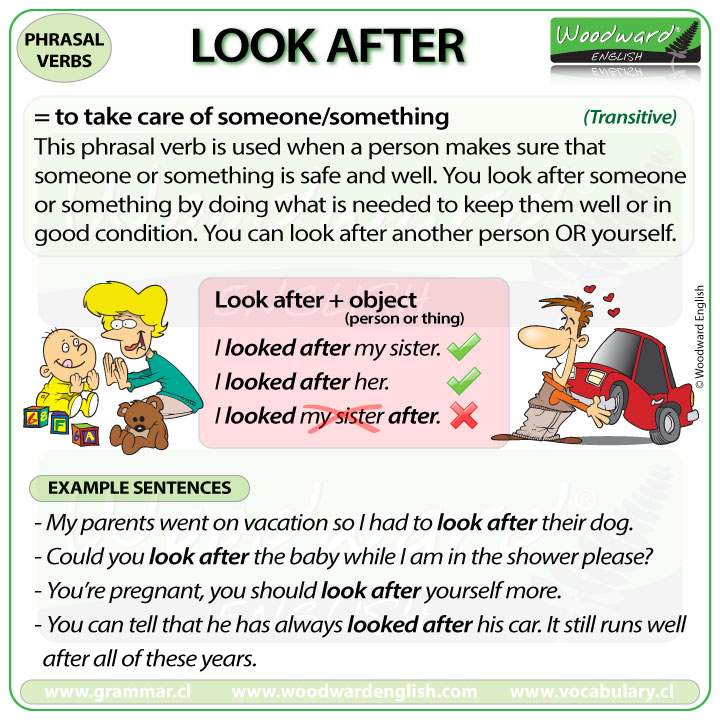Phrasal Verbs In Sentences 3,9/5 703 reviews
- Verbs
- Examples Of Verbs In Sentences
- Phrasal Verbs Example Sentences
Phrasal verbs are part of a large group of verbs called “multi-part” or 'multi-word” verbs. The preposition or adverb that follows the verb is sometimes called a particle. Phrasal verbs and other multi-word verbs are an important part of the English language.
Transcript Hi everyone, and welcome back to Seattle Learning Academy's American English Pronunciation Podcast. My name is Mandy, and this is our 53rd episode. I want to send a welcome to all the new listeners from Brazil today! I have had a sudden jump in Brazilian listeners due to a link from a prominent English learning website there. I've gotten emails from a few of you this week, and I want to make sure you all know we have forums on Pronuncian, and that is a great place to post your questions. That way everyone can learn from your question!

Today podcast is dealing with the rhythm of English, specifically sentence stress. Spoken rhythm is primarily created through a pattern of stressed and unstressed words. I'm sorry, but a bit of grammar is necessary here. Generally, content words are the stressed words, and function words are unstressed words. Nouns, main verbs, adjectives, and certain adverbs are usually content words, the other words, including pronouns, auxiliary verbs, and prepositions are usually unstressed words. Before we get started, I want to make sure everyone remembers that verbs tell us the action of a sentence.
In the sentence Janet swims. The word swims is the verb, and verbs are considered content words. In the sentence I am speaking. The words am and speaking are verbs. Speaking is the main verb, and am is the auxiliary verb. In sentences that have a main verb and an auxiliary verb, main verbs are content words, and auxiliary verbs are function words. The main verb gives the main information, and the auxiliary verb allows us to use the main verb in a grammatically correct way.
Prepositions are words that tell the relationship between a noun and another word. In the sentence Janet swims in a lake. The word in is a preposition. It relates swimming to the place it happened. Prepositions are usually function words. In the sentence I am speaking into a microphone.

The word into is a preposition. It is relating speaking to the microphone. Besides in and into, other prepositions include the following words: at below under over toward near on through beside and many more.
Verbs
I hope you get the idea. We also need to talk about adverbs. Adverbs are words that give additional information to verbs. They help to describe the activity.
In the sentence Janet swims quickly. The word quickly is an adverb. It is describing how Janet swims. Other adverbs include: over above up down This list could also be very long.
Some adverbs and prepositions look very similar, and sometimes the same word can be an adverb or a preposition depending on how it is used in a sentence. For what we will talk about today, it doesn't matter if the word is technically an adverb or a preposition, so don't worry about it too much. In fact, we are going to clump prepositions and adverbs that have this feature into their own group of words called particles. Now I am going to talk about idioms that happen when a verb gets combined with a particle. These are called.
Examples Of Verbs In Sentences
Most of you are probably aware of phrasal verbs, and many of you may hate them for their complexity. Phrasal verbs can make English comprehension difficult because they have a different meaning than either word alone. This will be easier to understand with examples. To hang up is a phrasal verb.
It can mean to put something, such as clothing, on a hook, or it can mean to end a conversation transmitted over phone or cellular lines, or even over the Internet. To hang up has nothing to do with the direction 'upward', as in looking up at the clouds. For English rhythm, while it isn't overly important to be able to tell a preposition form an adverb, it is important to be able to tell as phrasal verb from a verb the just happens to be near a preposition or adverb. Is everyone still with me? Well, if not, I'll link to some other websites from this episode's transcripts page for more help learning about phrasal verbs.
Learning phrasal verbs is just another part of learning vocabulary, so don't skip over learning this feature of English. I want to talk about a peculiar thing that happens when we speak using phrasal verbs; the particle becomes a stressed word; it behaves like a content word.
Phrasal Verbs Example Sentences
If the verb is a small, single-syllable word, often the particle is given more stress than the verb. This is because of the Rhythm Rule. Remember, the Rhythm Rule tells us that the stressed words of English happen on regular beats. Stressing the particle of a phrasal verb and can be easily demonstrated with the phrasal verb to hang up. Listen to the following sentence.

